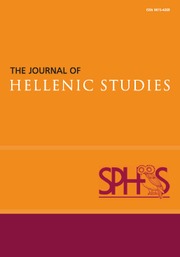Article contents
Thetis in the ‘Ovens’: A Reconsideration of Herodotus’ Topography of Magnesia
Published online by Cambridge University Press: 07 November 2017
Abstract
While scholars have long acknowledged the limitations of Herodotus’ Histories as a historical source, Herodotus’ topography of the Persian Wars is still usually seen as historically reliable information. This article, by contrast, aims to show that memory studies offers an attractive means to understand this layer of information, as the alleged locations of events do not, in many cases, necessarily reflect the historical situation. Instead, these places may, for various reasons, have been designated as such in local traditions in the ca. 50 years between the wars and Herodotus’ research. As a case in point, this article discusses the topography of Herodotus’ story of the Persian shipwreck along the coast of Thessaly before the Battle of Artemision in 480 BC (Hdt. 7.183, 7.188, 7.191–92). It argues that the attitude among scholars automatically to regard the locations in this account as historically correct has created various problems. In doing so, it identifies the elusive place of Sepias with the coast near the town of Veneto where a remarkable cluster of sea caves (the so-called ‘Ovens’) plausibly formed an ‘anchor’ for the myth of the abduction of Thetis by Peleus, as well as for the Persian shipwreck.
- Type
- Research Article
- Information
- Copyright
- Copyright © The Society for the Promotion of Hellenic Studies 2017
- 1
- Cited by


